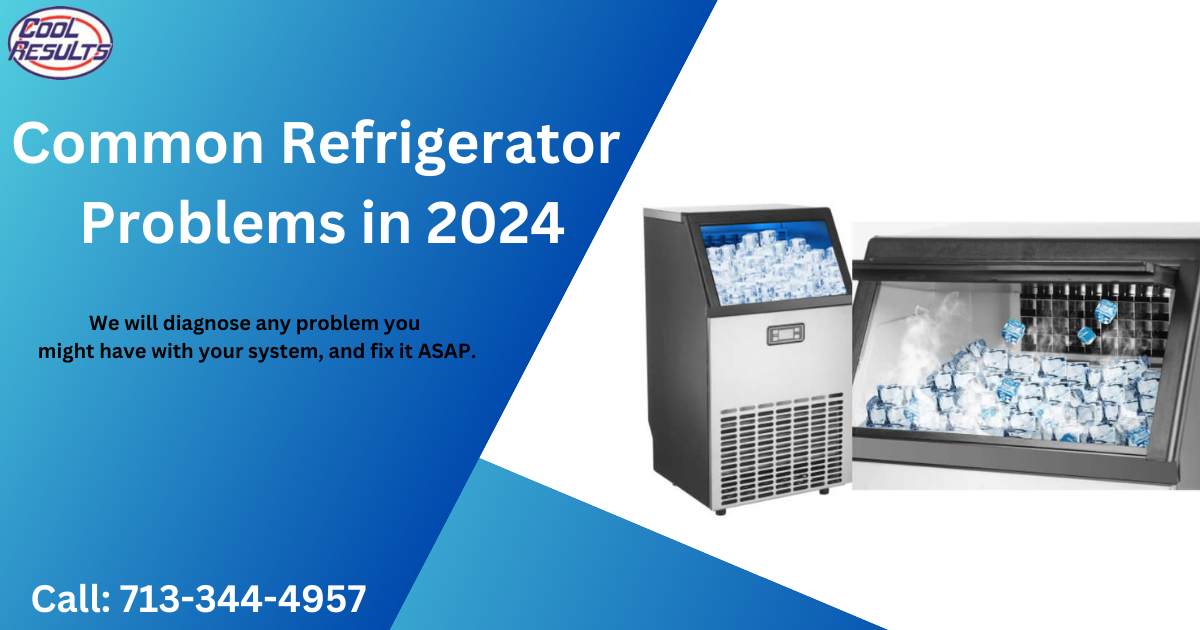In our hectic lifestyle, where we schedule our tasks from the morning until bed, we all buy and store provisions in bulk in refrigerators. Refrigerators have become indispensable appliances in everyday life, offering the utmost convenience.
More than storing perishables, refrigerators enable us to prepare and enjoy our favorite desserts without even stepping out of home. But what if, surprisingly, you encounter refrigerator problems, such as not cooling properly or freezer issues?
Being proactive and promptly addressing any issues with your refrigerator is key to ensuring its uninterrupted and efficient performance. This blog aims to equip you with knowledge about common refrigerator problems, empowering you to stay one step ahead.
Refrigerator Problems and DIY Refrigerator Troubleshooting Tips:
Here are the common refrigerator problems and how to troubleshoot a fridge:
1. Inconsistent Temperature Regulation:
- A refrigerator failing to maintain consistent temperature throughout all the areas can lead to issues like some areas of the fridge being too cold, causing the food to freeze, and other too-warm regions, leading to premature spoilage.
- Inconsistent temperature regulation can be caused by various factors, including a malfunctioning thermostat, compressor, or inadequate airflow within the refrigerator.
- Troubleshooting inconsistent temperatures: Check the temperature settings and ensure proper airflow by not overpacking the fridge. If the issue persists, it might indicate a faulty thermostat or compressor, requiring professional repair.
2. Excessive Frost Build-Up:
- Frost accumulation is one of the common freezer problems, affecting the refrigerator’s performance. When the defrost system fails to function properly, moisture in the air condenses and freezes on the evaporator coils, eventually forming a thick layer of ice.
- The ice build-up requires more energy to maintain proper temperature and thus reduces the refrigerator’s efficiency.
- Moreover, excessive frost can obstruct airflow and lead to uneven cooling throughout the refrigerator.
- Troubleshooting freezer: Defrost the refrigerator manually by turning it off and letting the ice melt. Afterward, check the defrost timer, heater, and thermostat for any signs of damage. If necessary, replace these components or seek professional help.
3. Leaking Water:
- Water leaks from a refrigerator can have various causes, each indicating potential problems with different components. A leak from the defrost drain suggests a clog in the drain line, preventing melted ice from properly draining out of the appliance.
- Leaks from the water supply line or filter may result from loose connections, damaged tubing, or a faulty filter.
- Regardless of the source, water leaks risk damaging the surrounding area and can also affect the refrigerator’s performance if left unaddressed.
- Troubleshooting leaking water: Inspect the defrost drain for any blockages and clear them using a pipe cleaner or hot water. For leaks from the water supply line or filter, tighten connections or replace damaged parts. If the issue persists, consult a technician for further diagnosis.
4. Unusual Noises:
- Unusual noises from a refrigerator indicate the underlying mechanical issues. These noises may range from buzzing, rattling, or grinding to loud banging or knocking sounds.
- Common causes of such noises include a malfunctioning compressor, faulty fan motors, worn-out bearings, or loose components within the appliance.
- Ignoring these noises can lead to further damage and potential breakdown of the refrigerator if not addressed promptly.
- Troubleshooting Fridge: Check for loose or damaged components, such as fan blades or condenser coils, and tighten or replace them if necessary. If the noise persists, it’s best to diagnose and address it with a professional technician.
5. Faulty Seals or Gaskets:
- Faulty gaskets are another crucial refrigerator issue that requires immediate attention.The seals or gaskets around the doors of a refrigerator are essential for maintaining proper temperature and humidity levels inside the appliance.
- Over time, these seals may wear out, become brittle, or develop tears, compromising their ability to create an airtight seal. Regular maintenance is key to preventing this. As a result, cold air may leak out, while warm air can seep in, leading to temperature fluctuations and increased energy consumption.
- Additionally, damaged seals or gaskets can allow moisture to enter the refrigerator, leading to condensation buildup and potential mold growth.
- Troubleshooting refrigerator: Inspect the seals and gaskets for signs of wear, tears, or gaps. Clean them regularly with mild soapy water and ensure a tight seal by applying a thin layer of petroleum jelly along the edges. If the seals are severely damaged, consider replacing them or seek professional assistance for proper installation.
Professional Refrigerator Troubleshooting and Repair:
If you encounter refrigerator problems and feel helpless with all the DIY, call a professional refrigerator repair like Cool Results for an efficient and effective solution. Our technicians troubleshoot common fridge problems at their root cause, leading to a long-lasting solution. Contact us today to book a service appointment!

